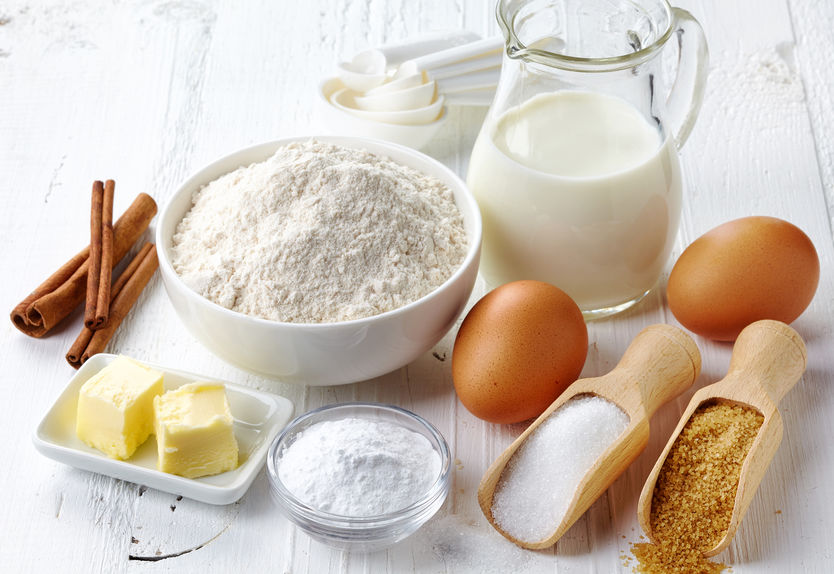
Milk, a widely consumed dairy product, plays an important role in baking and is considered a staple ingredient in many recipes.
Apart from adding moisture, it also contributes flavor and nutrients to baked goods.
In baking, milk serves as a hydrating agent, which allows dry ingredients to bind together and create a cohesive dough or batter.
It also adds richness and depth to the flavor profile of baked goods.
Milk is also a good source of protein, calcium, and other essential nutrients, which can enhance the nutritional value of baked goods.
You can use different types of milk in your baking, such as whole milk, skim milk, or even plant-based alternatives like almond or soy milk.
Depending on the recipe, the type of milk used can affect the texture, taste, and nutritional content of the final product.
By understanding the role of milk in baking, you can experiment with different types and quantities to create delicious and nutritious baked goods.
Milk is Ideal for Bread Making

Baking isn’t all about sweet treats.
Many home bakers primarily cook bread, and milk is perfect in this case.
Milk can technically be used as an alternative to water in any recipe.
It is made up primarily of water, along with fat, solids, vitamins, and minerals.
Milk works well in cookie dough because the fat can lead to chewier cookies.
It’s also ideal for baked loaves and muffins.
In bread, it’s an absolute wonder ingredient.
There’s typically 3.5 grams of fat to every cup of whole milk.
The fat allows for better moisture retention and increases the tenderness of the bread.
Fresh white loaves with cloudy interiors are made possible with the addition of whole milk in the dough.
Even whole-grain bread and various forms of brown bread can taste better when water is replaced with milk in the recipe.
Some recipes may even call for milk powder instead of whole milk.
Milk powder is a dehydrated form of milk that retains the fats and solids found in its liquid form.
When combined with water in a recipe, bread and other baked goods can gain the flavor, texture, and consistency benefits of milk.
What About Milk Substitutes?
If you want to remove animal fats from your baking, or if you have an allergy to milk products, you can replace milk with other ingredients.
It’s not ideal to replace milk with plain water.
Recipes that use milk typically do so because of the nutrients and consistency of milk.
Soy milk is the best alternative to cow’s milk in baking.
It produces similar results in recipes like bread, muffins, and cookies.
Almond milk can also be used, and it will impart a unique flavor.
- For the best results, use soy milk without added sweeteners. This Maeil Soy Milk is ideal for baking and is packaged in convenient 190 mL containers.
- Almond milk is more expensive than soy milk, but it’s worth exploring its flavor potential at least once. This Orgain Organic Plant-Based Protein Almond Milk is a good choice for home bakers.
Milk is a Key Ingredient in Home Baking

Milk is a versatile ingredient that not only hydrates dry ingredients in baking recipes but also adds essential nutrients and fat.
It’s essential to use it whenever the recipe calls for it, but if you’re looking for a dairy-free alternative, almond or soy milk can be great substitutes.
In addition to hydration, milk also adds flavor and richness to baked goods.
It can be used in various forms such as whole milk, skim milk, buttermilk, or even evaporated milk, depending on the recipe’s requirements.
Almond and soy milk are also excellent substitutes, especially for those who are lactose intolerant or follow a vegan lifestyle.
It’s essential to keep in mind that substituting milk with non-dairy alternatives can affect the taste and texture of the final product.
For example, using almond milk instead of whole milk may result in a thinner consistency and a nuttier flavor.
In summary, milk is a crucial ingredient in baking, adding hydration, nutrients, and richness to recipes.
However, if you’re looking for a dairy-free option, almond or soy milk can be great substitutes, but it’s important to keep in mind that they may affect the taste and texture of the final product.


